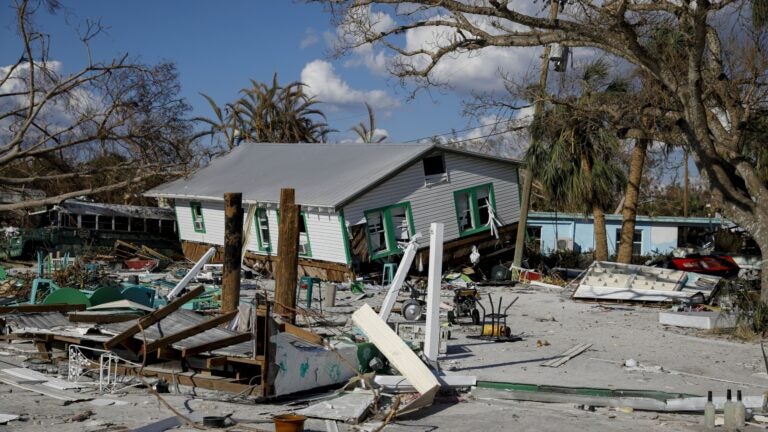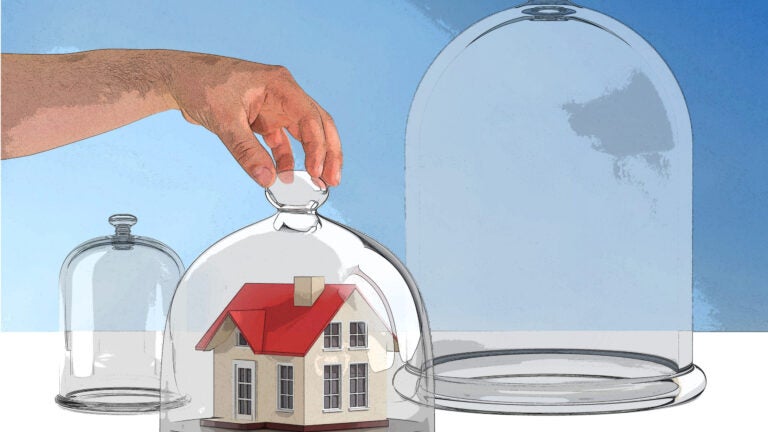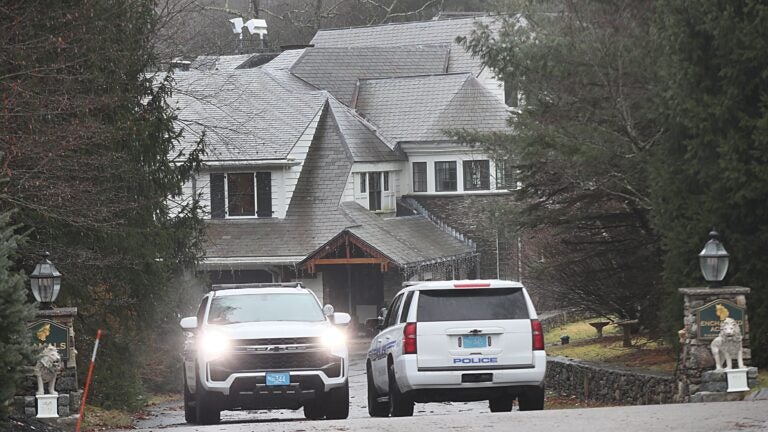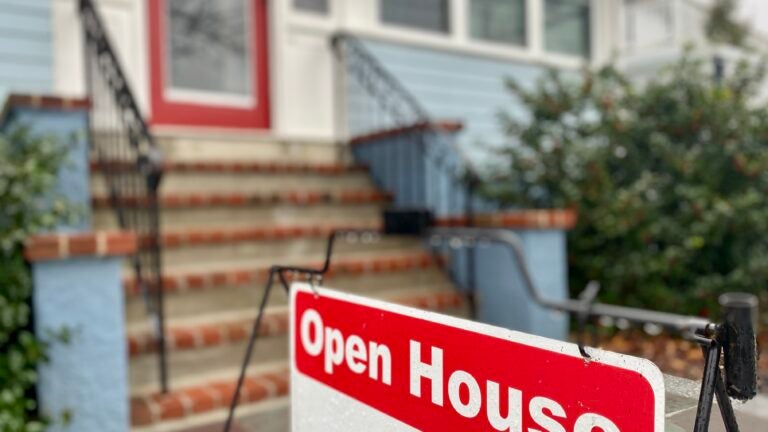Home insurance is clobbering consumers. Yet it’s barely counted as Inflation.
The biggest jumps occurred in Texas, Arizona, and Utah, which were among 25 states in total that posted double-digit surges last year. In some places, including Florida, rates are up more than 40% over the past five years.

JACKSONVILLE, Fla. — Holly Meyer Lucas estimates that as many as 30 of the 100 houses her real estate team sold in and around Jupiter, Fla., last year were put on the market because their owners could no longer keep up with skyrocketing home insurance.
“It is the housing crisis that nobody is talking about,” Meyer Lucas said. The houses sold easily, but often to well-off cash buyers who could drop the insurance altogether because they did not have a mortgage that required them to carry it.
Jumping insurance rates are acute in coastal Florida, with its exposure to big risks like hurricanes and coastal erosion, but they are also a nationwide phenomenon. Last year, premium rates for owner-occupied housing were up 11.3% on average nationally, based on data from S&P Global Market Intelligence.
Insurance rates have been climbing for a number of reasons: Storms have become more frequent and severe, inflation and labor shortages have driven up the cost of repairs, and home values have increased, requiring larger policies. The biggest jumps occurred in Texas, Arizona, and Utah, which were among 25 states in total that posted double-digit surges last year. In some places, including Florida, rates are up more than 40% over the past five years.
That can add up to a major additional annual expense for owners, The typical single-family homeowner with a mortgage backed by Freddie Mac was paying $1,522 in 2023, up from $1,081 in 2018. And that’s simply an average. Anecdotally, many people report seeing their premiums jump by thousands of dollars.
Those higher insurance rates are bringing pain to many homeowners, forcing people out of their homes and communities while leaving others taking big risks as they drop insurance altogether. But the rising costs are not meaningfully boosting the nation’s official inflation data, which could help to explain a small part of the disconnect between how people feel about the economy and how it looks on paper. Economic confidence remains depressed and consumers continue to fret about high price levels, dogging the Biden administration, even though inflation has been cooling and the job market is strong.
The consumer price index, which is the first of the two major inflation indexes released each month, uses only renter’s insurance when it calculates housing insurance costs. Structure insurance is excluded. That’s because government economists treat homes partly as financial investments, and count much of the spending related to them as further investment rather than consumption.
The Personal Consumption Expenditures index, which is the Federal Reserve’s preferred inflation gauge, does measure property insurance, but gives it only a tiny weight in the basket of goods and services that people consume. That’s because when calculating the weight, the government takes how much homeowners spend on insurance and subtracts how much insurance companies are expected to spend on claims. The upshot: What feels like a big expense to most people adds up to a tiny one for inflation accounting purposes.
While there’s a logic behind the way the measurement is done, the result is that official inflation figures either ignore or are barely budged by today’s big home insurance cost increases — even though they are noticeable, even painful, for many households.
Government economists treat homes partly as financial investments, and count much of the spending related to them as further investment rather than consumption.
Insurance is an example of a larger reality. Overall inflation has come down notably, but consumers are still struggling with uncertainty about key prices that make up an important part of their day-to-day lives. Housing costs are up. Emergency repairs of all kinds are expensive. And it may be tough for many to feel confident about the financial outlook when they remain worried about getting walloped with big and hard-to-avoid expenses like climbing annual premiums.
“It definitely matters for psychology — 100%,” Omair Sharif, founder of the research firm Inflation Insights, said of home insurance in particular. “But it amounts to having very little impact on the aggregate inflation data. It’s not really going to move the needle.”
Insurance rate increases could continue nationally in 2024, because insurers are still scrambling to break even. Claim payouts have been mounting, in part as disasters become more frequent amid climate change. Insurers’ losses from natural disasters topped $100 billion for the fourth straight year in 2023.
That has been not only about big and costly hurricanes, but also about smaller storms hitting the Rocky Mountains, the Great Plains, and even the Midwest.
“Individually, these storms are not costly, but collectively they can really start to add up,” said Tim Zawacki, lead analyst for the insurance industry at S&P Global Market Intelligence.
“I don’t think you can say for sure that rates have finished going up,” Zawacki said.
Heather Kruayai, a Redfin agent in Jacksonville, Fla., was shocked to see her own home insurance cost jump in December to $5,000 from $2,000. She shopped around and got a policy with an annual premium of $2,500, but she said she was lucky. Kruayai said she had known people who had to sell their houses because of sharp insurance cost increases, and had one client who moved in just a year ago and is now contemplating whether she needs to sell her home because the insurance and taxes had increased so much.
“Colleagues, friends — they’re all seeing the same thing,” Kruayai said. When buyers move into the area and realize how much of an annual expense insurance will be, she added, “they get a little bit of sticker shock.”
This article originally appeared in The New York Times.







Conversation
This discussion has ended. Please join elsewhere on Boston.com